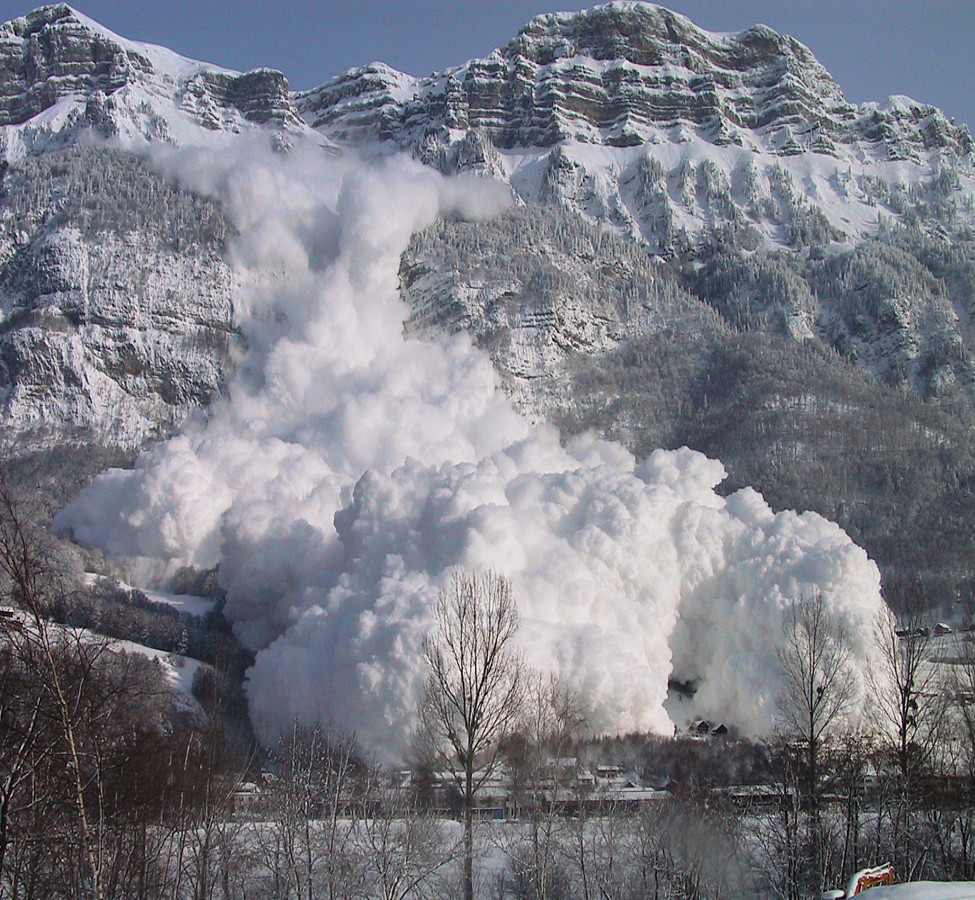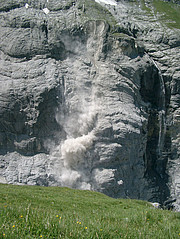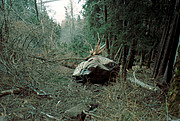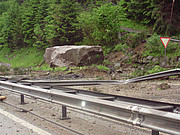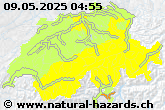How does a rock fall develop?
The falling mass often detaches from a steep cliff along geological planes, cracks and joints (fracture patterns). Continuous weathering causes the degradation of a steep slope and results in pebble and boulder fall. The source areas are steep rock faces (cliffs) or steep soil slopes (talus, moraine, old rock fall deposits). Rock fall can involve major volumes en masse that range between 100 and 100’000 m3.
The movement of a pebble or boulder fall is either of a falling, a rolling or a jumping type according to slope angle and surface roughness. In some instances it may also include a sliding process. The velocity reaches values of 20 to 100 km/h. A major rock fall can reach 150 km/h. At slope angles of less than about 25 to 30° the pebbles and boulders slow down and stop. Rock fall accumulation forms fan-shaped cones or talus slopes.
What type of damage occurs?
A pebble fall is lethal due to the high velocity of the falling components even with relatively small stones. Large boulders or blocks have a high destructive energy along most of the trajectory. Only shortly before the complete stop the energy decreases. Major rock falls cause massive debris accumulation with a change of topography on large areas. Pebble and boulder fall occur mostly without any precursors. The necessary time to issue a warning and to evacuate the affected areas is too short. A major rock fall, on the other hand, has in general clear precursors like increased pebble and boulder fall days and weeks before the main event. In such cases emergency measures can be implemented on time.
